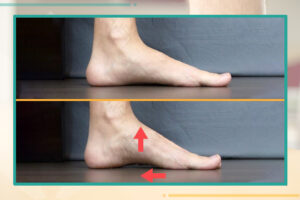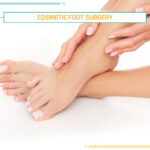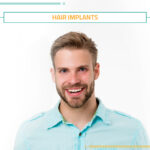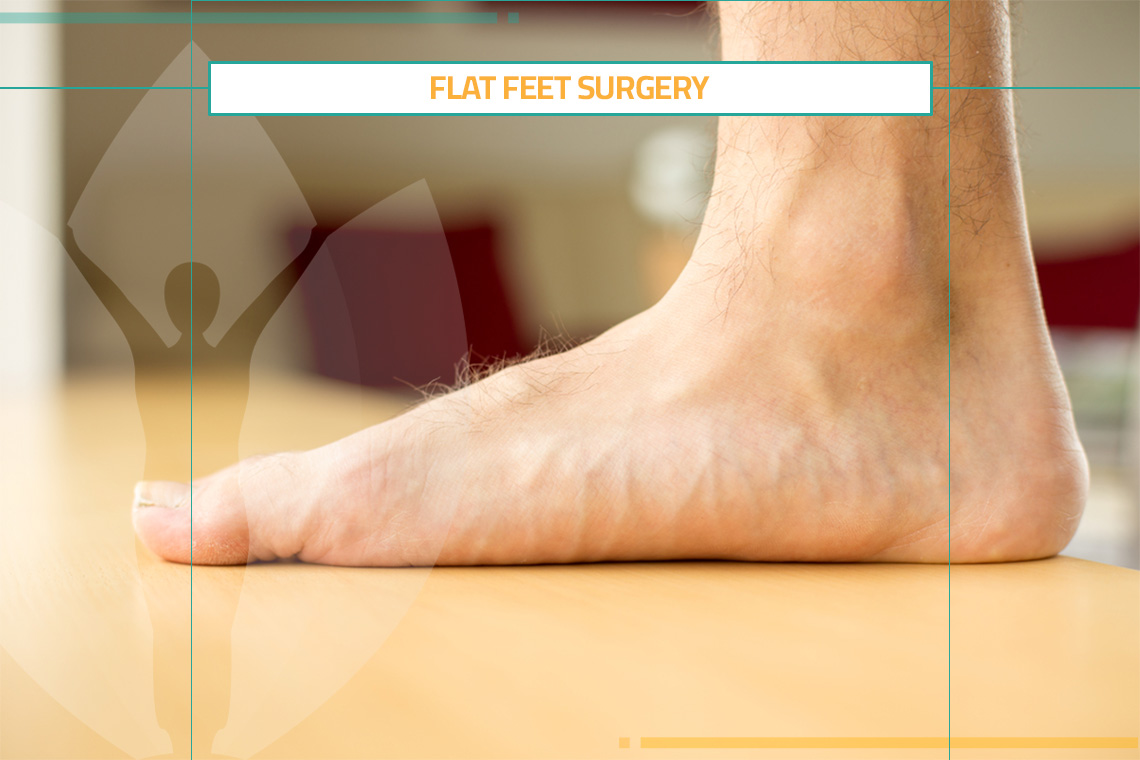Flat Foot Correction
The bones, ligaments, and tendons that support the arch are addressed during Flat Foot Correction, frequently by a combination of techniques. The purpose of the procedure is to realign the foot and restore more natural pressure when walking and standing. Additionally, this operation can increase walking capacity and lessen pain.
The height of the arch has no effect on how well a foot can function, hence a flat or low arched foot is not regarded as odd. In extreme situations or when the degree of malalignment is such that the patient feels pain or weariness, or is likely to do so, treatment is necessary.
It is believed that these patients have a pathological flat foot. Most of the time, supportive footwear, orthoses (shoe inserts), and stretching exercises help alleviate the discomfort. Surgery may be recommended if conservative measures fail to improve the patient’s condition.
Flat Foot Diagnosis
Ankle and/or foot discomfort and trouble with everyday tasks are common complaints from patients with painful flatfoots. A thorough assessment of the foot, including a physical examination, X-rays, and medical history, should be performed by an orthopaedic surgeon who specializes in feet and ankles. The first line of treatment should be non-surgical measures include physical therapy, shoe inserts, braces, immobilization, and rest. Surgery can be considered if these don’t work.
The safety of flatfoot reconstruction should be assessed by the patient’s primary care physician if they take oral steroids or have diabetes. Smokers and obese people are more likely to experience wound issues and blood clots. After flatfoot surgery, it may take up to a year to fully heal. This procedure shouldn’t be performed on patients who can’t or won’t finish this process.

What Are the Reasons of Flat Foot?
- The causes of a pathological flat foot include tendon injuries, usually to the tibialis posterior, and congenital defects.
- Conditions affecting the function of muscles and nerves.
- Hypermobility of joints.
- A rigid, flat foot is the result of two bones uniting abnormally (coalition).
- The condition of arthritis.
FAQ`s about Flatfoot Reconstruction
Will my foot look better after having my flatfoot surgically corrected?
The main goals of flatfoot surgery are function restoration and discomfort reduction. Surgery is not the main goal of treatment, even if it is likely to improve the foot’s cosmetic appearance.
Watch how the full process of Teeth Veneers
After flatfoot surgery, what kinds of activities will I be able to engage in?
Many people resume active lifestyles after receiving the appropriate treatment and therapy. Walking, bicycling, driving, and even playing golf are all accepted. However, patients are less likely to be able to engage in high-impact, extremely demanding activities that involve sprinting, cutting, or jumping.
What Happens during the Surgery to Correct Flat Feet?
The majority of the time, the procedure is carried out while you are unconscious under general anesthesia. A spinal or localized anesthetic, on the other hand, just numbs the leg. Both the inner and outside of the foot will be surgically sliced during the procedure. A calcaneal osteotomy involves cutting the heel bone using a saw, moving it beneath the ankle, and then fastening it with screws or metal plates. Next, a nearby tendon (the flexor digitorum longus tendon) is used to replace the injured posterior tibial tendon on the inside of the foot. Artificial tape can be used to reinforce or repair the primary ligament (spring ligament) on the inside of the foot at the same time.
Why would I require surgery for Flat Foot Correction?
You might need flat foot surgery if you have flat feet, which is a condition where there is little to no room beneath the arch of the foot when you are standing. Among the symptoms are:
– Having pain, especially in the inner ankle and foot, when walking or running
swelling in the ankles.
– Damage to the foot’s nerves on the inside of the ankle that results in tingling or numbness.
– Early identification is crucial because if therapy is not received, the foot may lose its flexibility, become more difficult to cure, and develop arthritis.
5 benefits of Rhinoplasty
Different Ways for Flat Feet Correction
Exercises to stretch the hamstring and calf muscles after Flat Foot Correction
It has been demonstrated that having tight calf muscles increases the risk of the foot collapsing, which results in the heel bone rolling in and the arch height decreasing. Standing on an adjustable slant board for two to three minutes twice a day, continuously, is usually enough to increase flexibility.
Physiotherapy to enhance coordination and build muscle
Although the core, thighs, and buttocks are the main muscle groups, an individual training regimen would be required.
Insoles and braces for the ankles
When walking, these gadgets assist in keeping the foot in a neutral position. Although they usually only work with laced training shoes, they can offer support if employed, but they do not correct bad alignment.
Handling discomfort
– Analgesics and anti-inflammatory drugs
– Injections of local steroids
Supportive Shoes for Flat Feet
The shoe must lessen undesired motion if it is to offer support. As a result, it must be reasonably rigid and secured to the foot with tightly attached laces.
Risks of the Surgery to Fix Flat Feet
Infection
• 1-2% of people post-surgery may experience skin infections requiring antibiotics or more severe, deep infections.
• Nerve injury can result in numbness or nerve pain, and further surgery may be required.
• Blood vessel injury can occur at the operated site, and bleeding may occur after the operation.
Joint Stiffness
• Joints around cut bones may become stiffer after the operation.
• Physiotherapy can improve mobility, but it may still feel stiff at times.
Bone and Wound Healing Problems
• Blood supply to the foot is less good than other areas, causing longer healing times.
• Weight loss and smoking, diabetes, and certain medications can slow the healing process.
• Bones may not heal at all and remain painful, requiring further surgery.
Problems with Metal Screws/Plates
• Metalwork used to stabilize bones during healing can cause pain in about 15% of patients.
• Hypersensitive scars can occur as the surrounding skin feels numb and overly sensitive.
Pain
• Residual aching is common but can be controlled with simple painkillers.
•It may occur after the surgery, requiring further operations.
• Fractures are rare and need to be fixed at the time of the surgery.
Little or No Improvement
• Despite correcting the shape, the foot may remain problematic to the same degree as before the surgery.
Worse Symptoms
• Complications can cause 1-2% of patients to feel their foot is worse than before the operation.
Blood Clots
• Being inactive in a cast increases the risk of forming a blood clot in the veins in the leg.
• Clots can cause pain and swelling in the limb and can also break off from the leg and move round the blood stream to the lung.
Anaesthetic Problems
• General anesthetic is usually safe, but rare complications can be serious and threaten life.





